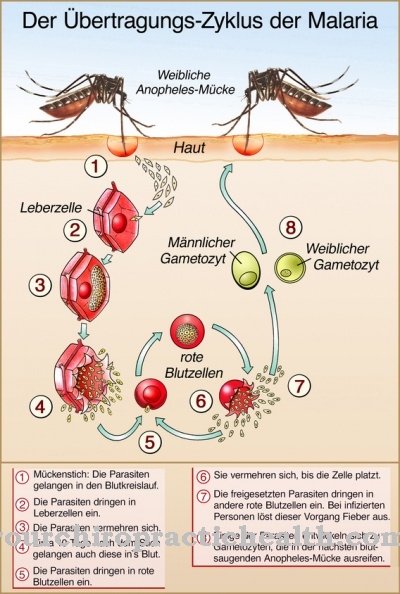Viruses as pathogens are responsible for many infections. In contrast to bacteria, viruses are absolutely immune to antibiotics. Vaccinations against some viral infections exist, but not all viruses.
What are viruses

Viruses are genetic parasites. They attack both bacteria and higher cells and thus also organisms including humans. They are biological packages that transport their genetic material (DNA) into the host cell. There, the cell metabolism does what the viruses themselves cannot:
The host cell produces new viruses according to their DNA blueprint and dies. This releases thousands upon thousands of these copied viruses. Since viruses do not have their own metabolism and cannot reproduce themselves, they also do not belong to the realm of living beings.
Nevertheless, they must have evolved from living cells, as their biochemistry clearly indicates. The cells of all life forms can be attacked by certain viruses that are only “responsible” for them. This strict specialization is another characteristic of viruses.
Meaning & function
Viruses cause cells to self-destruct. Their importance as pathogens in humans, animals and plants is therefore in the foreground.
Bacteria and fungi also pose a significant risk of infection. However, some of these microorganisms are vital for humans. Attention should be drawn to the skin flora, which protects us humans from many infections. The intestinal flora is better known, without which optimal digestion would be unthinkable.
However, among the naturally occurring viruses, there are no forms that are in any way useful to humans. As mere DNA transporters without an independent metabolism, viruses cannot be eradicated by antibiotics. Because antibiotics are deadly metabolic poisons only for bacteria. The medical treatment of viral infections therefore has narrow limits.
Antivirals are drugs that can inhibit the virus from multiplying, but do not eliminate them completely. Despite all the risks that viruses pose as infectious pathogens, their modern significance for research and medicine must not be overlooked. Genetically engineered viruses are already used to treat bacterial infections. Such viruses are used in particular to fight bacteria that have become resistant to antibiotics.
But there are also approaches to use specially modified viruses in cancer therapy. These "oncolytic viruses" only attack and destroy tumor cells and thus have a highly specific effect. The patient is spared the serious side effects of chemotherapy.
The efforts of somatic gene therapy are also very promising: for example, hereditary diabetes should be curable in the future. In this approach, viruses modified in the laboratory serve as vehicles ("vectors") that smuggle healthy genetic material into organs with genetic defects.
Diseases
Viruses are, however, primarily a constantly lurking danger. With each infection, their rate of reproduction runs into the millions, if not billions. Due to the occurrence of such high numbers in a very short time, diverse mutations take place. New virus strains can thus germinate at any time and unexpectedly.
The flu waves that break in every year are therefore basically unpredictable. The global Spanish flu pandemic of 1918 and 1919 killed at least 30 million people. The situation of those infected with HIV is worrying today. Most of the 50 million people affected live in the third world. With a number of antivirals, doctors can inhibit the growth of the virus and significantly extend the life of the patient. But the serious side effects of drug therapy usually make HIV patients early retirees.
For most patients in poor countries, AIDS remains a death sentence: they cannot afford the expensive drugs. The most effective way to get a grip on the human epidemic would be a vaccine. However, the development of such a serum has proven very difficult.
Many virus infections have been practically eradicated with vaccinations in the last century. Chickenpox, measles and polio hardly play a role, at least in the western industrialized countries. Improved vaccination morale could also push other serious infections such as meningitis (early summer encephalitis or TBE) or hepatitis A and B into the background. Because of its variability, no vaccine can be developed against the cause of the runny nose. However, the pathogens are not among the most dangerous viruses.
















.jpg)



.jpg)

.jpg)




